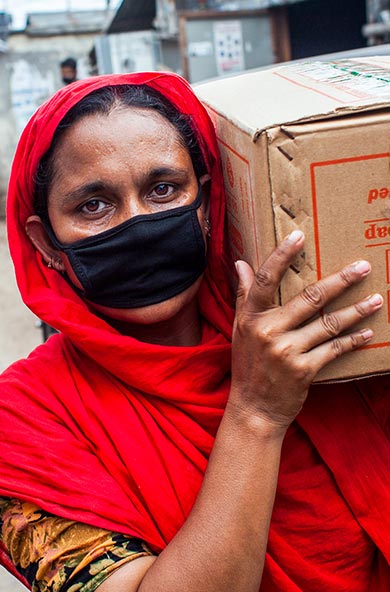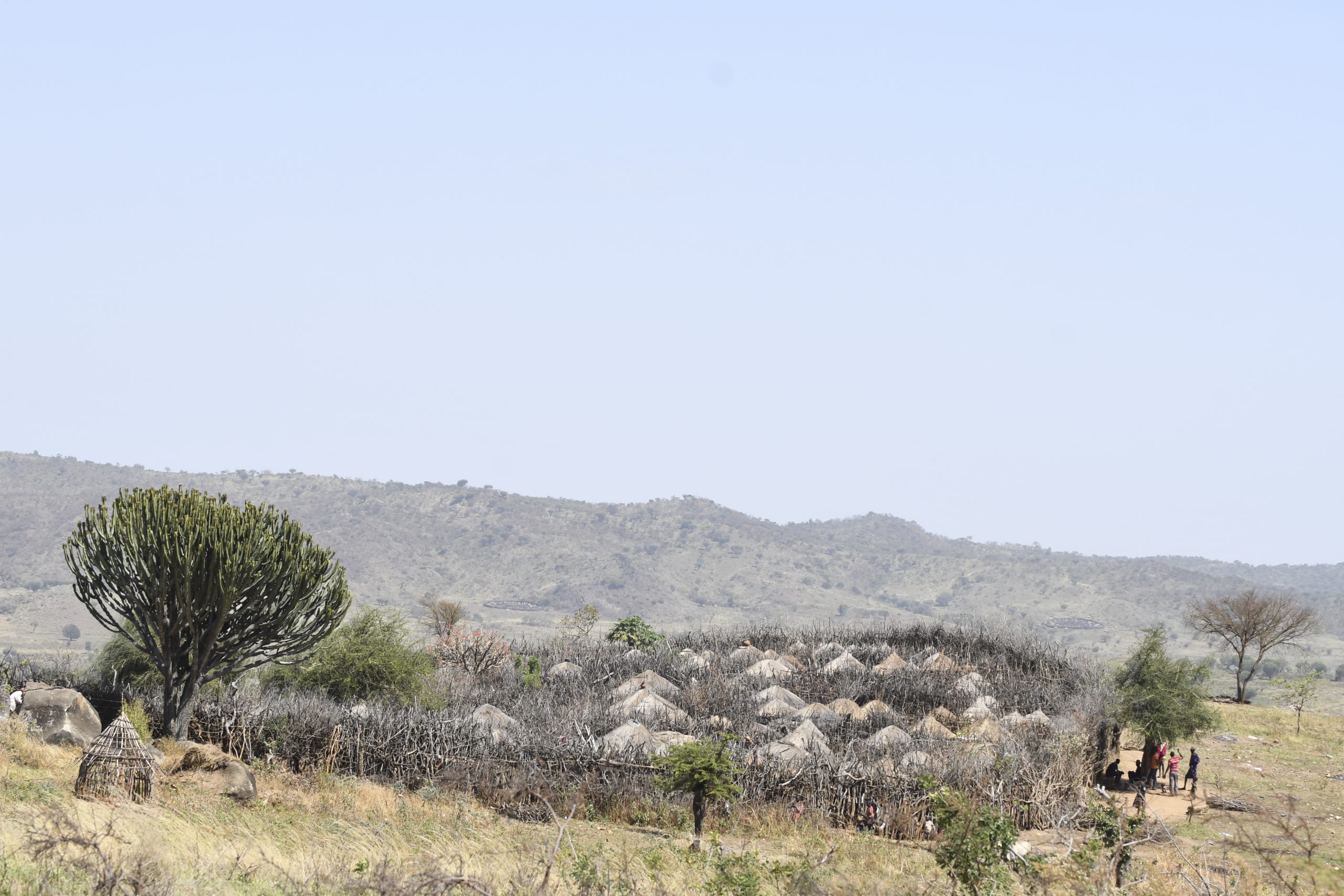By Antony Mutungi, Data Specialist UNDP ABC.
Africa’s borderlands are home to some of the continent’s most creative and resilient populations. However, inadequate curation of data about the sources of their resilience, and socio-economic livelihoods is a significant gap in the development and policy ecosystem. In 2021, the Africa Borderlands Centre (ABC) embarked on wide-ranging activities including commissioning of the Borderlands Encyclopaedia, to enhance evidence and knowledge-based programming, elevate voices of stakeholders, and deepen practitioners’ understanding of the borderlands’ strengths and development trajectories. It is estimated that over 270 million inhabitants live in Africa borderlands regions. This population is significantly larger than any single state on the continent. According to the Borderlands Encyclopaedia, this population is spread across an estimated 735 borderlands municipalities (districts) and a staggering 86,979 Kms of shared borders and between 48 African countries. These regions have stood the test of time by using the often-underrated local indigenous knowledge with creativity and innovation to curate solutions to the myriad borderlands’ challenges ensuring continuity of life and nurturing of the next generation of borderlands inhabitants. According to the UNDP Assistant Administrator and Director Regional Bureau for Africa, “Africa’s borderlands are regions of strength, all-inspiring beauty, resilience, and creativity. The generations of borderland communities who occupy these spaces prove this as they continue to adapt and thrive”.
Despite the economic potential and abundance of natural resources in Africa borderlands, they are at the risk of being left behind as they tend to be underserved by national institutions and suffer from endemic poverty, rampant insecurity, and underdevelopment. This problem has been compounded by the lack of borderlands data in the realms of limited research, data collection and analysis to inform evidence-based policy and development programming in borderlands. Data is not easily available which easily disaggregates information regarding poverty levels across Africa’s borderlands, nor is there data which measures exclusion and inequality. Macro, comparative analysis generally fails to capture the fine-grained, context-specific detail needed to operate effectively in these complex environments. Meanwhile, ethnographic research, where it is conducted, tends to be confined to academic analysis, and the information has not often been synthesized into knowledge that can be easily and effectively utilized by policymakers to ensure more effective engagement with borderland issues.
In an effort to bridge the data gaps in Africa borderlands, the UNDP Africa Borderlands Centre conceptualized and developed a first of its kind Borderlands Encyclopaedia which aims to aggregate secondary data from 106 terrestrial border pairs/trios in Africa on borderlands demography, economy, security, basic infrastructure, conflict situation and mobility. The Encyclopaedia concept was refined through consultations with borderland stakeholders, UN and UNDP Data Experts, and development practitioners. This was followed by data mining using online Volunteers, refinement and clean-up exercises, development of factsheets, data visualization maps and the design of the Encyclopaedia portal to enhance centralized, systematic, and interactive utilization of the mined data generated. The Encyclopaedia data is presented to achieve a high level of granularity. The vision of the Centre is to position and elevate the Encyclopaedia as the ‘one-stop shop’ for accessing authoritative borderlands data for evidence-based policy, research, innovation, and development programming.
Further, the mined data was synthesized, analyzed, distilled, and packaged into border pairs specific factsheets and illustration maps which aimed to summarize the complex unstructured data and present it an easy to relate format. The figure below shows an excerpt of the Congo Brazzaville – Gabon border pair factsheet.
Guided by UNDP’s principle on youth and women empowerment and participation, and in cognizance of the ‘youth bulge’ phenomenon in Africa and the need to harness the demographic dividend for sustainable development in Africa, the Centre through a Bootcamp Workshop engaged the services of youthful men and women from the University of Nairobi – some of whom come from borderlands areas- to develop data visualization maps using the mined data. 10 out of the 15 students engaged were women. The data visualization maps seek to simplify the complex Encyclopaedia data to expose the realities of Africa borderlands communities to a broader audience in a visually graphical manner. According to one of the bootcamp participants, ‘The output in the form of Illustrative Borderland Maps is a sure way to condense and visualize expansive data that would otherwise take volumes of books in prose. We are elated to help magnify the voices of our Africa Borderland Communities”. ABC’s commitment to the principle of leaving no one behind calls for deliberate efforts to ensure that data is available that speaks to the lives of those living in Africa borderlands.
Besides the factsheets and illustrative maps and to better understand the true picture and opportunities in borderlands the Centre developed a first of its kind coffee book building on the Encyclopaedia data, a repository of borderlands stories, the power of pictures and illustration maps to elevate the voices of borderlands communities. The coffee book puts a face to the quantitative data contained in the Encyclopaedia and gives a firsthand account of borderlands realities as corroborated by the ABC flagship research report.
Through partnership with two research institutions in the Horn and West Africa, the ABC conducted flagship research into the sources of resilience of agro-pastoralists in borderlands in eight (8) countries namely Ethiopia, Uganda, South Sudan, Kenya, Mali, Burkina Faso, Niger, and Nigeria. A mixed method approach utilizing quantitative, qualitative, and ethnographic photography was deployed to collect primary data. The research sampling frame utilized the Encyclopaedia’s border pairs information to survey 1042 agro-pastoralists from 55 sampling points within a 30 Km radius along international borders, 62 key informant interviews and yielded 92 in-depth discussions. An overarching finding from the research shows that family, labour diversification and mobility underpins resilience for agro-pastoralists and by extension borderlands communities at large. For instance, in the research report, respondents were asked to name the sources of support when faced with economic problems, 67% said family, 25% friends, 26% government and 18% community networks among other reasons as shown in the figure below:
Moreover, the research residual data is being used to model a series of thematic analytical papers in the areas of mobility and conflict and how these dynamics affect the different segments in the community with a spotlight on gender and youth.
The UNDP ABC is at the forefront in advocating and championing for more concerted multi-stakeholders’ engagement to bridge the data gaps in borderlands targeting inter-alia, policy makers, data experts, researchers, programme and innovation experts, development partners and the private sector to forge data collection and sharing alliances.
Considering the foregoing, the Centre is convening the first ever Africa borderlands data forum in March 2023 with data producers, innovators, users, scientists, and policy makers to jointly discuss the data ecosystem of Africa’s borderlands, identify data gaps and jointly prioritize areas for potential collaboration. This follows a mapping exercise which identified more than 50 potential organizations to collaborate with on data drawn from UN entities, academia and the private sector, and targeted consultations with up to 20 these organizations which culminated into one partnership to produce analytical reports on informal cross-border traders -youth and female owned businesses- in East Africa focusing on Uganda, Tanzania, Kenya and Rwanda. Furthermore, the Centre seeks to strengthen the borderland data landscape by encouraging the production and use of timely and geo-referenced data, ensuring that no one in the borderlands is left behind in data representation. In the ever-thinning resources basket and stiff competition for humanitarian and development priorities the Centre will leverage on the data forum to create a vibrant platform of borderlands data influencers and forge bilateral and multilateral data partnerships to strengthen collaboration on borderlands data.
In conclusion, it is premised that, ‘data is the new oil’, and the Centre will continue to champion for robust mechanisms and partnerships to ensure better data is available to spur socio-economic transformation in Africa borderlands communities in realization of Africa’s Agenda 2063 and Sustainable Development Goals (SDGs).


